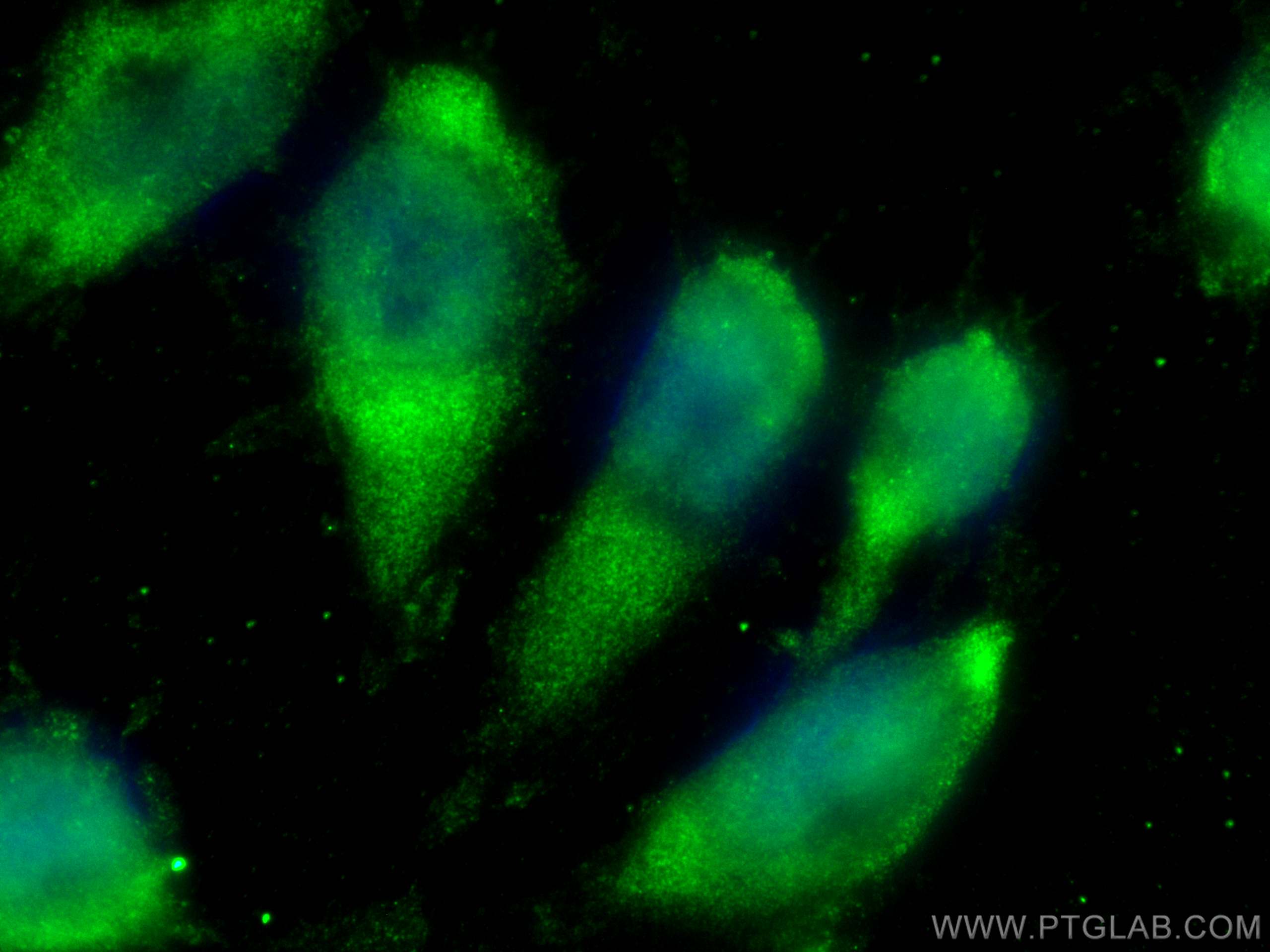Tested Applications
| Positive IF/ICC detected in | U-251 cells |
Recommended dilution
| Application | Dilution |
|---|---|
| Immunofluorescence (IF)/ICC | IF/ICC : 1:50-1:500 |
| It is recommended that this reagent should be titrated in each testing system to obtain optimal results. | |
| Sample-dependent, Check data in validation data gallery. | |
Product Information
CL488-68169 targets NIT2 in IF/ICC applications and shows reactivity with Human, mouse, rat, pig samples.
| Tested Reactivity | Human, mouse, rat, pig |
| Host / Isotype | Mouse / IgG2b |
| Class | Monoclonal |
| Type | Antibody |
| Immunogen |
CatNo: Ag9889 Product name: Recombinant human NIT2 protein Source: e coli.-derived, PET28a Tag: 6*His Domain: 1-276 aa of BC020620 Sequence: MTSFRLALIQLQISSIKSDNVTRACSFIREAATQGAKIVSLPECFNSPYGAKYFPEYAEKIPGESTQKLSEVAKECSIYLIGGSIPEEDAGKLYNTCAVFGPDGTLLAKYRKIHLFDIDVPGKITFQESKTLSPGDSFSTFDTPYCRVGLGICYDMRFAELAQIYAQRGCQLLVYPGAFNLTTGPAHWELLQRSRAVDNQVYVATASPARDDKASYVAWGHSTVVNPWGEALAKAGTEEAIVYSDIDLKKLAEIRQQIPVFRQKRSDLYAVEMKKP Predict reactive species |
| Full Name | nitrilase family, member 2 |
| Calculated Molecular Weight | 276 aa, 31 kDa |
| Observed Molecular Weight | 31 kDa |
| GenBank Accession Number | BC020620 |
| Gene Symbol | NIT2 |
| Gene ID (NCBI) | 56954 |
| RRID | AB_3084428 |
| Conjugate | CoraLite® Plus 488 Fluorescent Dye |
| Excitation/Emission Maxima Wavelengths | 493 nm / 522 nm |
| Form | Liquid |
| Purification Method | Protein A purification |
| UNIPROT ID | Q9NQR4 |
| Storage Buffer | PBS with 50% glycerol, 0.05% Proclin300, 0.5% BSA, pH 7.3. |
| Storage Conditions | Store at -20°C. Avoid exposure to light. Stable for one year after shipment. Aliquoting is unnecessary for -20oC storage. |
Background Information
NIT2 belongs to a branch of the nitrilase superfamily of enzymes that cleave carbon-nitrogen bonds. NIT2 functions as an omega-amidase and catalyzes hydrolysis of alpha-ketoglutaramate, forming alpha-ketoglutarate and ammonia. This reaction is also functionally coupled with a subset of transaminases that reaminate the keto acid analogs of some essential amino acids, most particularly methionine and phenylalanine.
Protocols
| Product Specific Protocols | |
|---|---|
| IF protocol for CL Plus 488 NIT2 antibody CL488-68169 | Download protocol |
| Standard Protocols | |
|---|---|
| Click here to view our Standard Protocols |




